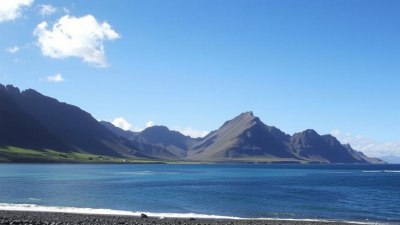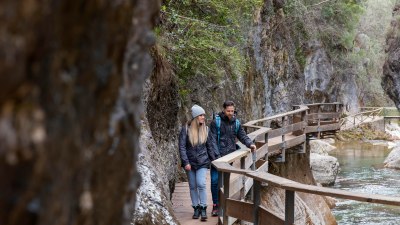The Most Isolated Places to Experience Pure Nature
Explore the most untouched and isolated natural places on Earth for pure serenity and beauty.

Image created with Flux Schnell
In a world that is increasingly dominated by urbanization and technology, there is a yearning for reclaiming a connection with nature. There are hidden corners of our planet that offer pure serenity, incredible beauty, and an experience of isolation that many of us seek. These isolated places are not just destinations; they are sanctuaries of natural wonders where one can escape the hustle and bustle of modern life. In this article, we will delve into some of the most isolated places across the globe that promise to offer an authentic encounter with nature.
1. Tristan da Cunha, South Atlantic Ocean
Tristan da Cunha holds the title for being the most remote inhabited archipelago in the world. Located approximately 2,400 kilometers from the nearest inhabited land, it is part of a volcanic group that has an extraordinary landscape featuring steep cliffs, lush vegetation, and an abundance of wildlife. This isolated settlement, with its small population of around 250 people, offers hiking trails, stunning vistas, and a chance to experience a lifestyle that has remained largely unchanged. Visitors can enjoy the occasional boat tour, wildlife spotting, and the peacefulness that comes from being so far removed from city life.
2. The Amazon Rainforest, South America
The Amazon Rainforest is one of the largest and most ecologically diverse places on Earth. This vast expanse of greenery is not just isolated but also vital in preserving biodiversity. Vast stretches of the Amazon are untouched by human interference, offering an experience of nature that feels primal and pure. Here, you can spot myriad species of flora and fauna, enjoy sounds that are foreign to urban life, and immerse yourself in the richness of the ecosystem. Expeditions led by local guides can take you deep into the forest, offering insights into indigenous cultures and the importance of conservation.
3. Bouvet Island, South Atlantic Ocean
Bouvet Island is a small, uninhabited island that is part of Norway. Located largely in the Southern Ocean, this island is mainly covered in ice and is largely a biological reserve. The isolation and remoteness means that it is visited by very few people, mainly scientists and explorers. The stark beauty of Bouvet Island offers dramatic glacier landscapes and rugged terrain, making it a haven for those who wish to escape from civilization. Its extreme weather conditions and isolation make it one of the last untouched places on Earth.
4. Greenland, Arctic
Greenland is known for its mesmerizing landscapes, dominated by icebergs, fjords, and stunning vistas. With a population density of just about 0.03 per square kilometer, this vast island provides ample opportunities for solitude and serenity. The rugged terrain and harsh climate create a challenging yet beautiful environment, perfect for adventurous souls. From kayaking between icebergs to experiencing the Northern Lights in winter, Greenland offers an unforgettable experience of pure nature surrounded by isolation.
5. The Faroe Islands, North Atlantic Ocean
The Faroe Islands, a group of 18 islands located between Iceland and Norway, boast stunning cliffs, dramatic landscapes, and a sense of isolation. With an average population of around 50,000, these islands provide a tranquil environment characterized by lush green hills, unique wildlife, and picturesque villages. Hiking trails along the coastline provide breathtaking views of the Atlantic Ocean, and the traditional Faroese way of life invites visitors to experience a peaceful existence deeply tied to nature.
6. Svalbard, Norway
Svalbard is an archipelago located in the Arctic Ocean that offers dramatic landscapes, vast glaciers, and a rich wildlife experience. With a population of about 2,500 people, Svalbard is a place where polar bears roam free, and you can observe the majestic scenery of the Arctic environment. Experience the midnight sun in summer or the polar night in winter while indulging in outdoor activities such as snowmobiling or dog sledding. Svalbard represents one of the most remote regions where the raw beauty of nature thrives amidst isolation.
7. Socotra Island, Yemen
Socotra Island is globally recognized for its unique and diverse ecosystems. Often referred to as the 'Galapagos of the Indian Ocean,' Socotra has captured the imaginations of adventurers and biologists alike. This isolated island boasts extraordinary flora and fauna, with over 30% of its plant life being endemic. The surreal landscape includes dragon blood trees and bizarre rock formations, leaving visitors in awe. With limited access and few tourist facilities, Socotra offers genuine solitude to those who venture to this enchanting location.
8. The Muir Woods National Monument, California, USA
The Muir Woods National Monument is renowned for its towering ancient redwoods and serene atmosphere. Located just north of San Francisco, this national monument may not be extremely far from urban life, but it provides an extraordinary experience of isolation within nature. Walking amongst trees that are over 1,000 years old can be a profound experience that offers a connection to centuries past. The trails in the lush forest allow for quiet contemplation and a deep appreciation for the grandeur of nature.
9. The Himalayas, Nepal/Tibet
The majestic Himalayas stretch across five countries, with the region offering some of the most rugged and isolated landscapes on the planet. The towering peaks, including Mount Everest, are often surrounded by picturesque valleys, serene lakes, and a culture steeped in tradition and spirituality. For those seeking adventure, trekking in the Himalayas offers an opportunity to immerse oneself in pure nature while gaining insights into the local communities. The tranquility and breathtaking views can be transformative, making the isolation feel invigorating.
10. The Serengeti, Tanzania
The Serengeti National Park is among the most famous national parks in the world and boasts vast open spaces, a plethora of wildlife, and a sense of isolation as one ventures deep into the savanna. With over 15,000 square kilometers of wilderness, visitors can experience nature in its rawest form. Whether witnessing the Great Migration of wildebeest and zebras or simply absorbing the sounds and sights of the African landscape, the Serengeti is a true embodiment of natural beauty and isolation.
11. Antarctica
Antarctica is perhaps the most isolated and extreme environment on Earth, where the landscape is dominated by ice and snow. This unforgiving terrain offers an unparalleled opportunity to experience nature at its most untouched. The wildlife, such as penguins, seals, and whales, thrives in this low-human-interference environment. Adventure seekers may visit the icy continent through guided expeditions, offering the chance to see stunning ice formations and the stark beauty of the landscape. Antarctica represents isolation in its purest form and provides experiences that few will ever encounter.
12. The Scottish Highlands, Scotland
The Scottish Highlands offer some of the most remote and stunning landscapes in Europe. With vast mountains, glens, lochs, and a rich cultural heritage, the region is famous for its rugged beauty. The remoteness of the Highlands allows for a feeling of isolation where visitors can hike, cycle, or explore while soaking in the tranquil scenery. The awe-inspiring landscapes, coupled with the rich wildlife, create an atmosphere that invites exploration and connection with nature.
13. Kakadu National Park, Australia
Kakadu National Park is a UNESCO World Heritage site and boasts incredible biodiversity along with stunning scenery. The park is home to ancient Aboriginal rock art, wetlands, and an array of wildlife species. The isolation offered in Kakadu allows for peace and tranquility as one can immerse within nature while exploring extraordinary landscapes that include waterfalls, rivers, and escarpments. An experience in Kakadu offers both cultural and natural richness with opportunities for guided tours and immersive exploration.
14. The Canadian Rockies, Canada
The Canadian Rockies encompass breathtaking mountain ranges, pristine lakes, and rugged wilderness. This vast region provides a fantastic sense of isolation, making it a sought-after destination for nature lovers and adventurers. With national parks such as Banff and Jasper, visitors can explore diverse ecosystems, enjoy hiking trails, or relax by turquoise lakes. The majestic mountains and untouched landscapes make for unforgettable experiences in pure nature, surrounded by breathtaking views.
15. The Great Barrier Reef, Australia
The Great Barrier Reef, while famous for its vibrant underwater world, offers remote areas where true isolation can be found. Exploring the more distant regions of the reef can provide astonishing encounters with marine life and breathtaking coral ecosystems. Adventurous travelers can undertake liveaboard dive trips to escape the crowds and experience the vibrant underwater world directly. Here, the connection with nature is profoundly intimate and awe-inspiring, promising encounters that will last a lifetime.
These isolated locations around the world illustrate the breathtaking beauty of pure nature, offering solace from the noise and congestion of modern life. Whether it is the rugged terrains of the Himalayas or the unique ecosystems of Socotra, each location provides an opportunity to delve into the heart of nature. Discovering these hidden gems allows you to disconnect from the outside world, immerse yourself in solitude, and witness the planet's untamed beauty. An experience in these isolated places can be life-changing, enriching your soul, and fostering a deeper appreciation for the natural world.











